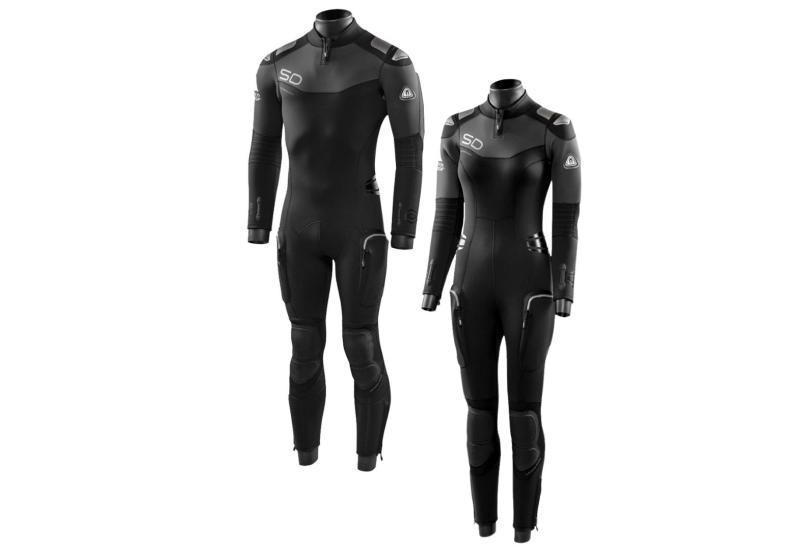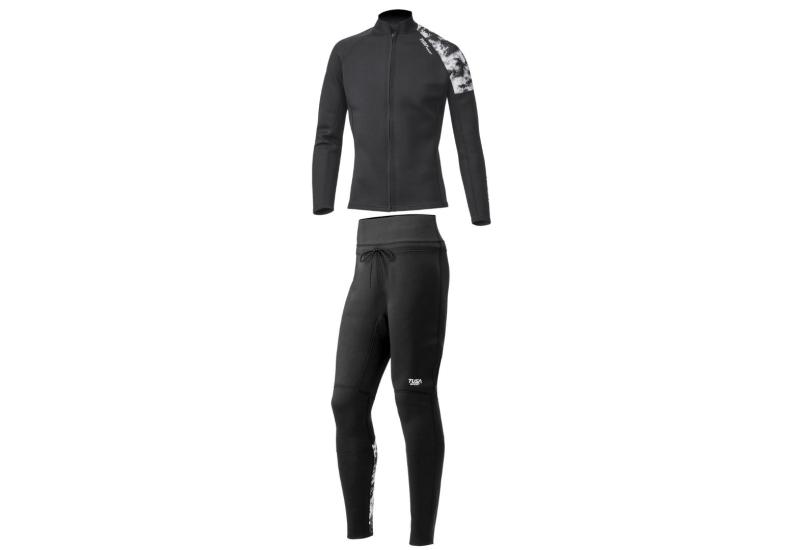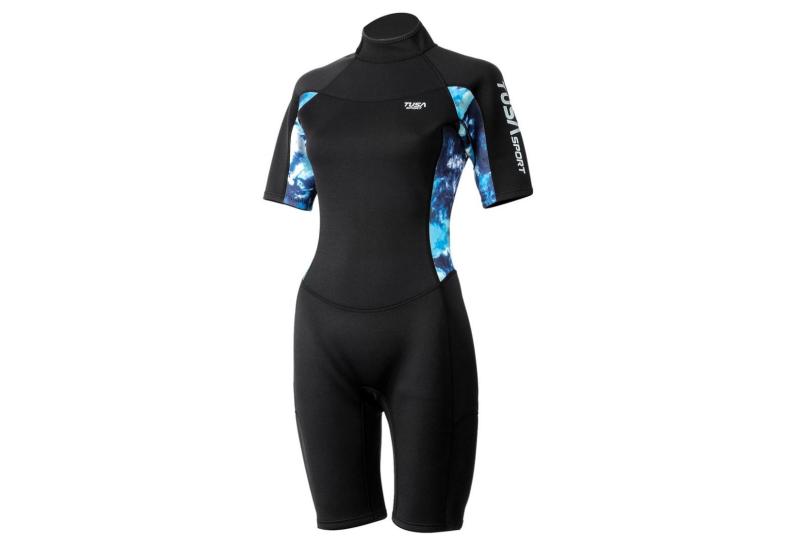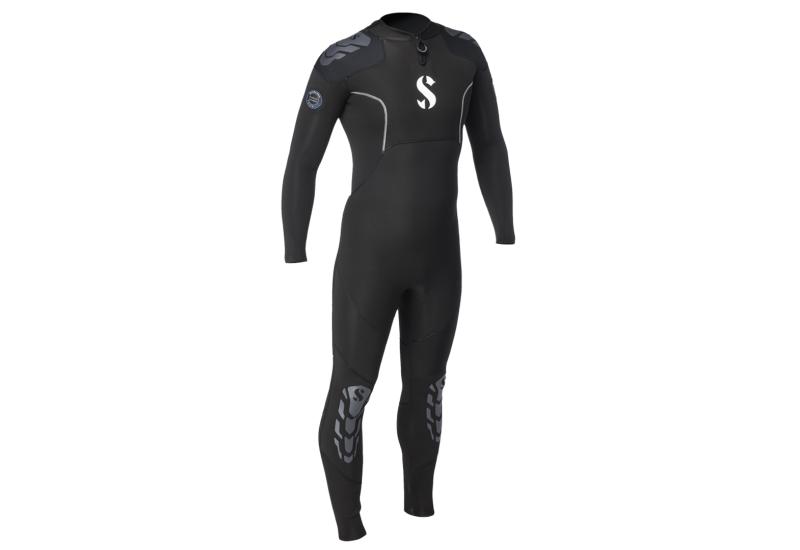Wetsuit Materials and How To Pick the Right One

It's important to get a wetsuit that's made of the right materials.
Bill Doster
Before purchasing a wetsuit, be familiar with the materials and designs utilized in making wetsuits, and figure out what kind of diving you do.
How a wetsuit works
Wetsuits are made of neoprene rubber, a closed-cell foam that traps millions of tiny gas bubbles within its structure. Unlike open-cell foam (i.e., a sponge), water won’t saturate neoprene, but the gas bubbles tend to give the material a lot of inherent buoyancy. When you put on a wetsuit, your 98.6-degree body temperature warms the gas bubbles in the neoprene, which act as insulation. This, combined with a snug ft, minimizes the amount of water that enters the suit and keeps body heat from escaping.
In order for a wetsuit to do its job, it should:
- Be the correct thickness for the water temperature you’re diving in
- Have seams, seals and zippers that minimize water intrusion
- Fit well
The truth is, no one suit will deliver the same thermal performance for all divers. There are simply too many variables that need to be factored in. So when you hear a claim that one particular suit is warmer than another, you can’t count on this being true for you. But what you can count on are a number of design and construction methods that make a high-quality suit. Find a suit with the right stuff, and you will find wetsuit nirvana.
For more on wetsuits:
Already have a great wetsuit? Here are some tips to keep it in tip-top shape.
In the market for a 7 mm wetsuit? See what you should look for here.

Bill DosterIt's important to get a wetsuit that's made of the right materials.
Before purchasing a wetsuit, be familiar with the materials and designs utilized in making wetsuits, and figure out what kind of diving you do.
How a wetsuit works
Wetsuits are made of neoprene rubber, a closed-cell foam that traps millions of tiny gas bubbles within its structure. Unlike open-cell foam (i.e., a sponge), water won’t saturate neoprene, but the gas bubbles tend to give the material a lot of inherent buoyancy. When you put on a wetsuit, your 98.6-degree body temperature warms the gas bubbles in the neoprene, which act as insulation. This, combined with a snug ft, minimizes the amount of water that enters the suit and keeps body heat from escaping.
In order for a wetsuit to do its job, it should:
- Be the correct thickness for the water temperature you’re diving in
- Have seams, seals and zippers that minimize water intrusion
- Fit well
The truth is, no one suit will deliver the same thermal performance for all divers. There are simply too many variables that need to be factored in. So when you hear a claim that one particular suit is warmer than another, you can’t count on this being true for you. But what you can count on are a number of design and construction methods that make a high-quality suit. Find a suit with the right stuff, and you will find wetsuit nirvana.
For more on wetsuits:
Already have a great wetsuit? Here are some tips to keep it in tip-top shape.
In the market for a 7 mm wetsuit? See what you should look for here.










